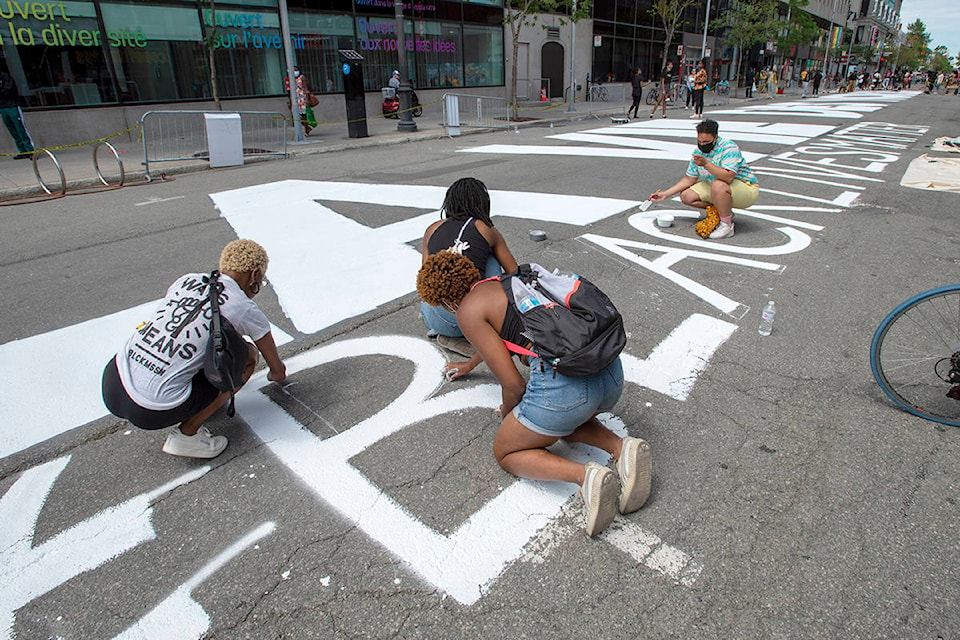Deaths due to COVID-19 have been highest in neighbourhoods made up of at least 25 per cent visible minorities, according to a report from Statistics Canada.
The data, released late last month, took a neighbourhood-by-neighbourhood look at pandemic deaths across the country between March and July. In that time period, there were 8,796 deaths in Canada, with the majority in Quebec with 5,806. Ontario was second with 2,550, B.C. third with 187 and Alberta fourth with 179.
June Francis, an associate professor of marketing, business and society at the SFU Beedie School of Business, said the results are not surprising.
“This data is very valuable, however, the data that should have been collected from the beginning, at an individual level, would have been the ideal data,” Francis told Black Press Media by phone.
B.C. health officials have been pushed over the months to begin collecting data on race, similarly as they do on age and gender, of people who are infected with and die as a result of COVID-19. However, as of early December, the twelfth month since the pandemic began to hit B.C., such data is not collected.
In the Statistics Canada study, which is unaffiliated with the B.C. government, researchers divided neighbourhoods into different categories based how much of their population was made up of visible minorities: less than 1 per cent, from 1 per cent to less than 10 per cent, from 10 per cent to less than 25 per cent and 25 per cent and over.
The data showed that neighbourhoods with more than 25 per cent visible minorities had a mortality rate of 34.5 per cent per 100,000, compared to 27.3 per 100,000 for neighbourhoods made up of 10 to 25 per cent of visible minorities, 12.7 per 100,000 for neighbourhoods between one and 10 cent visible minorities and 16.9 per 100,000 for less than one per cent.
Francis said that all that was possible now was to infer conclusions from this neighbourhood level data.
This data, she said “points to this alarming thing, that we suspected and now it’s confirmed” and we’ve not paid attention to it.
While B.C. health officials have cited the difficulties of collecting and cataloguing race-based data in their COVID-19 systems, Francis thinks that’s not the only reason.
“There’s a tremendous resistance to acknowledging that Canada is not a ‘colourblind society,’” she said. The first step she’d like to see is for public health to acknowledge this, in the same way officials acknowledge that age and sex can affect how disease strikes.
“We collect data on people’s age. Why? Because we know, and suspect, that for a variety of factors… age may be an important thing to know in order to know how to treat and prevent diseases among certain groups,” Francis said.
“We’re resistant to the idea that race also contributes in this way because we have held onto this idea that systemic racism in health and other institutions does not exist.”
Statistics Canada found that although deaths in B.C. were lower overall when compared to Ontario and Quebec, the age-standardized mortality rate was more than 10 times higher in neighbourhoods with the highest proportions of visible minorities than in those with the lowest.
The data released by the agency is not the first to point to higher mortality rates based on race and socioeconomic differences. Statistics Canada note that many visible minorities have “higher poverty rates and are over-represented in socio-economically disadvantaged neighbourhoods,” as well as more likely to live in multi-generational households and to work at jobs that put them at higher risk.
But Francis said that while the collection and interpretation of race-based data can save lives, it’s important to do so correctly. She cited the history of the census, “the basic idea behind the data collection was to protect white lives.”
“Data was collected in a way that has for sure historically disadvantaged certain people,” she said. “We would like, as racialized communities, to be part of the process to ensure, for example, how that data is asked.”
The monthly release of data by local health area does not make things better, Francis noted. Local health area data varies around the province, with Vancouver being divided up into six areas, while large swathes of less populated areas in northern B.C. are divided into few regions
“We know this is likely to be the truth… and yet our government is releasing data in the most unhelpful way and of course we’re all drawing inferences,” she said, pointing to blame that has been cast at the South Asian community of Surrey for higher rates of the coronavirus in the area.
“And yet, there is no public health initiative. It’s like if they don’t tell us, they won’t have to do anything.”
As the world inches towards a COVID-19 vaccine, Francis said that it’s more important than ever to look at how race affects a person’s risk of dying from the virus. B.C. is expecting to begin vaccinating people in the first weeks of 2021 with the Pfizer and Moderna vaccines. In total, Canada is expected to receive an initial supply six million doses, although there is no word of how many B.C. will get.
So far, provincial health officials have pointed to long-term care residents, staff and hospital workers as the first people who receive the vaccine. But who comes next?
“How are they going to make that decision? We [racialized people] may end up on the bottom of that as well,” she said, because there is such limited data on how the pandemic disproportionally affects them.
READ MORE: B.C. Black-based group starts COVID-19 fund, urges officials to collect race-based data
Like us on Facebook and follow us on Twitter.
Want to support local journalism during the pandemic? Make a donation here.
